Double Happiness, Double Joy: The Chinese “Shuangxi” Symbol
You may have seen this popular Chinese symbol adorning both antique and modern decor. More commonly, this symbol is a decoration symbol of marriage seen plastered on the windows of newlyweds and embellished wedding favors. This is the Chinese symbol for double happiness. The symbol is recognized as 雙喜 (shuāng xǐ), of which characters literally translate to “double happy”. 喜 is pronounced “xǐ” with the meaning: joy. When doubled, the symbol for double happiness “囍” is produced. If you are wondering how to present the double happiness symbol in Chinese authentically, the character “xǐ”, is not only doubled, but it must be connected by the two strokes in the middle. This connection symbolizes the two happy individuals joining as one for double the happiness.
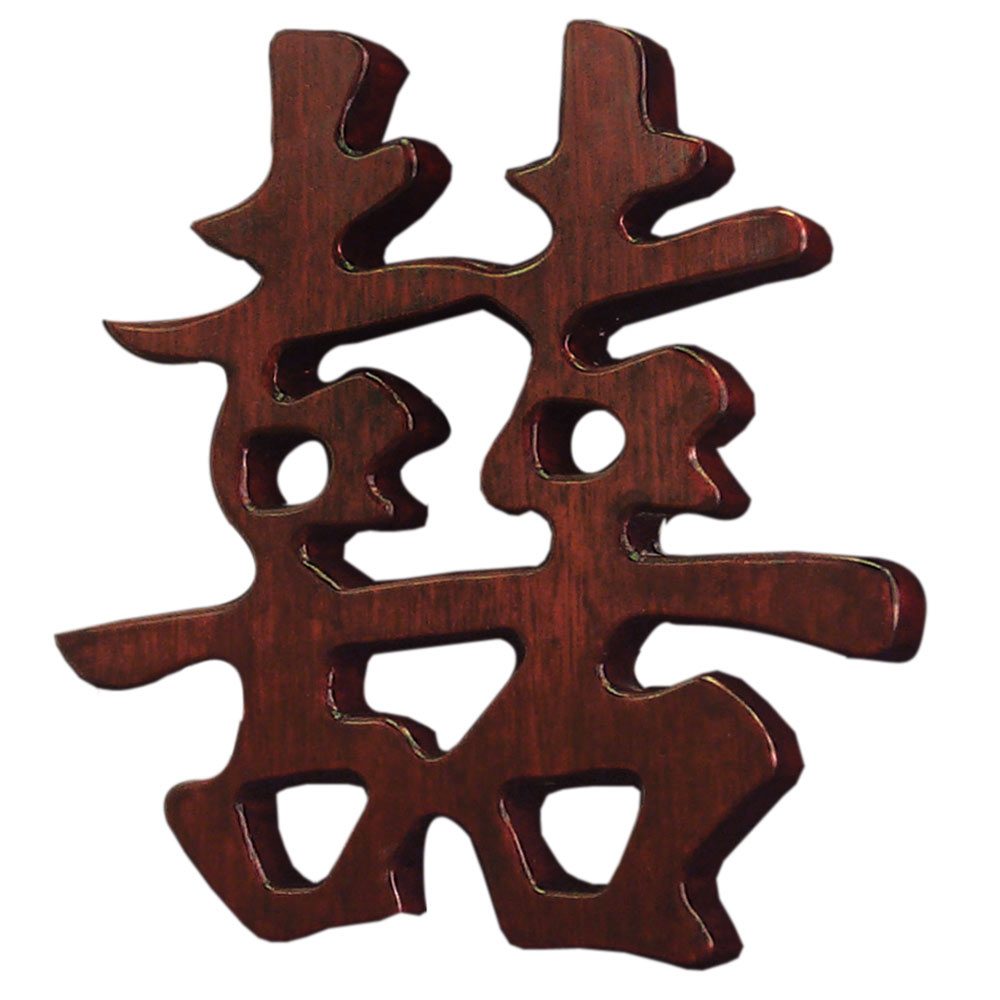
Why are two Chinese happiness characters joined together?
Traditionally, stories regarding the origin of the double happiness character often contain two different types of joys. When a Chinese person greets with 雙喜 (shuāng xǐ), they are wishing for more than just an abundance of joy, rather, they are wishing the recipient personal happiness and professional happiness - the two cornerstones that build a holistic, successful person.
Contemporarily, Shuangxi is often used as the central decorative element during wedding ceremonies. Under this context, each Xi in the double happiness symbol represents the joy of each individual. Joining together the two Xi with two central strokes, the two characters are bound together, becoming one.
The Elusive History of the Double Happiness Symbol
There are quite a few interpretations pertaining to the origin of the double happiness symbol, however none are 100% historically accurate. While those who share these stories may not be aware, all of the reproductions were likely motivated by marketing purposes due to their lack of traceability and incorporated western themes. Here, we will explore the different renditions on the history of the double happiness symbol.
Traditional Origin and Interpretation of the Double Happiness Symbol
The legend of this folktale begins in the Northern Song Dynasty (960-1279). A prime minister and litterateur, by the name of Wang Anshi, invented “double xi” (囍). This concept details the circumstances where two happy events materialize at the same time. Wang Anshi had taken and passed a government examination, plus got married. This manifested “囍” to be exclusively related with weddings as symbolic through decor. Furthermore on the big day for the couple, 囍 is present everywhere, be it: windows, doors, invitations and even the red envelopes containing money.
The theme of xi in marriage, is the concept of its function: with the wedding banquet labeled as 喜宴 (xǐyàn), wine served labeled as 喜酒 (xǐ jiǚ), even sweets labeled as 喜糖 (xǐtáng). This tradition gives a palpable sense that Chinese weddings are extremely propitious, providing good fortune while warding off evil spirits. Therefore in the occurrences of an elderly relative being unwell, it is said the younger couples advance the date of marriage in the belief that it will contribute to helping their state of recovery. This practice is known as 冲喜 (chōngxǐ).
A Variation on The Double Happiness of Wang Anshi
In consonance with the legend, Wang Anshi traveled to the capital Bianliang with the objective of taking the imperial examinations. The result of these examinations would uncover who of the highest scholars would be appointed as ministers of the court.
Along his journey passing Majiazhuang, Wang Anshi crossed a large house, spotting a "head half" of a couplet in front of Ma Yuanwai’s house constructed as:
走馬燈,燈馬走,燈熄馬停步
“walking horse lantern, horse lantern walking, lantern extinguished horse stopped trotting”
The walking horse lantern here refers to a carousel lantern, specifically for riding a horse during the night. Wang Anshi, even whilst hastened to get to Beijing for the imperial examinations, he chose to briefly disregard it. Finding that this house belonged to Ma Yuanwai, Wang Anshi discovered that a rather beautiful young lady also lived here. She had founded the witty sentence that was 'head half', pursuing the perfect couplet in a 'tail half '. Therefore if anybody was able to provide this tail half, she'll marry him. Admiring both the innovative and intelligent concept of the phrase, Wang Anshi had secretly fallen in love with this girl.
In the final portion of the exam, the Emperor wanted a final test as an interview for each response the candidate's provided. With Wang Anshi's turn on the horizon, the emperor provided him with the head half of the couplet:
飛虎旗,旗虎飛,旗卷虎藏身
“Flying tiger flag, flag tiger flying, flag rolling tiger hides itself”
Interpreting the witty sentence with the meaning "a flag with a flying-tiger totem on it, it is not the tiger that is flying by itself, but the flying flag makes it, when the flag rolls, people can not see the tiger as if the tiger hides in the flag." Wang Anshi promptly perceived this as the perfect fit to that of the couplet Ma Yuanwai's daughter had mentioned. He took the young lady's head half as the answer. Enraptured to see the matching half of his couplet, the emperor was impressed by the quality of talent and appointed Wang Anshi with the highest form of appraisal.
Promptly after finishing the examination, Wang Anshi traveled day and night to return to Ma Yuanwai's house. Finding the carousel lantern still hanging in front of the house, Wang Anshi approached the young lady bestowing "flying tiger flag" as the tail half to the head half of the couplet. The young lady expressed euphoria to Wang Anshi's answer, accepting his request for marriage.
A Modern Variation of Double Happiness Origin
If you search the internet for the origin of the double happiness symbol, you may be met with a love story supposedly dating back to the Tang Dynasty: the Chinese love story of a young scholar who fell ill during his travels and consequently taken in by a kind girl and her father. A summary of this story is as follows:
Similar to the previous version, the story begins with an unnamed young scholar on his way to the imperial city to take the imperial exam. During the young scholar’s travel through a mountain village, the scholar had succumbed to illness. This was when he was discovered by a kind-hearted herbalist and his daughter. They tended to the young scholar by taking him into their house and treating him. Nursed to good health, the scholar had found himself falling in love with the herbalist’s daughter. This left him torn between his love for her and his own ambitions of being selected as a royal court minister. The daughter wrote half of a love couplet to give to the scholar on his departure:
“Green trees against the sky in the spring rain while the sky set off the spring trees in the obscuration.”
The young man had told her he would return to marry her when he passed the Emperor’s exam, in which he was then able to use this same couplet as an answer to the Emperor’s request to finish the couplet of his own:
“Red flowers dot the land in the breeze’s chase while the land Colored up in red after the kiss.”
Matching the couplet together, the Emperor was pleased with the intellect of the young man appointing him as minister of the court. Allowing the young man to return home briefly, where the young man had returned to the herbalist’s daughter to recite the couplet of the Emperor.
Thus, the couple then joined the symbol of 喜 with 喜 together to represent the importance of balance and symmetry to their marriage, making it a potent love charm.
Due to the lack of information on resources and citing for these recent variations, as well as the lack of paraphrasing, it is likely that more recent versions were romanticized for better marketing purposes.
How to use Double Happiness Symbol - Design & Placement
A characteristic of the double happiness symbol that makes it more versatile than others is that it is symmetrical. Balance and symmetry is important to Chinese Taoism and Feng Shui philosophy, as not only does symmetry fuel balance, it can be used both ways.
As aforementioned, this symbol is used to bring two people (usually lovers) together, which turns one happiness into two. This gives double happiness purpose during couples occasions such as anniversaries and Valentine’s day. Indisputably, the most popular occasion for this symbol to be used is in weddings. A painted double happiness symbol on a piece of blue and white porcelain surrounded by auspicious motifs such as sweet pea scroll patterns acts as a great centerpiece and placeholder for good Feng Shui. Smaller pieces make good parting gifts, as well as wedding gifts. The contrast between the white porcelain and the dark blue strokes against the vase make it an eye-catching addition as the centerpiece to a table.
The double happiness symbol can be placed in bright spaces and anywhere many people will pass by and see it. This way, we pass on the positive energy and Feng Shui of the double happiness symbol. As for the best placement in terms of symbolism, “double happiness” is most prevalent in feng shui placements within the master bedroom, on the wall above the bed, or the southwest corner of the master bedroom, known as the love and relationship luck sector.
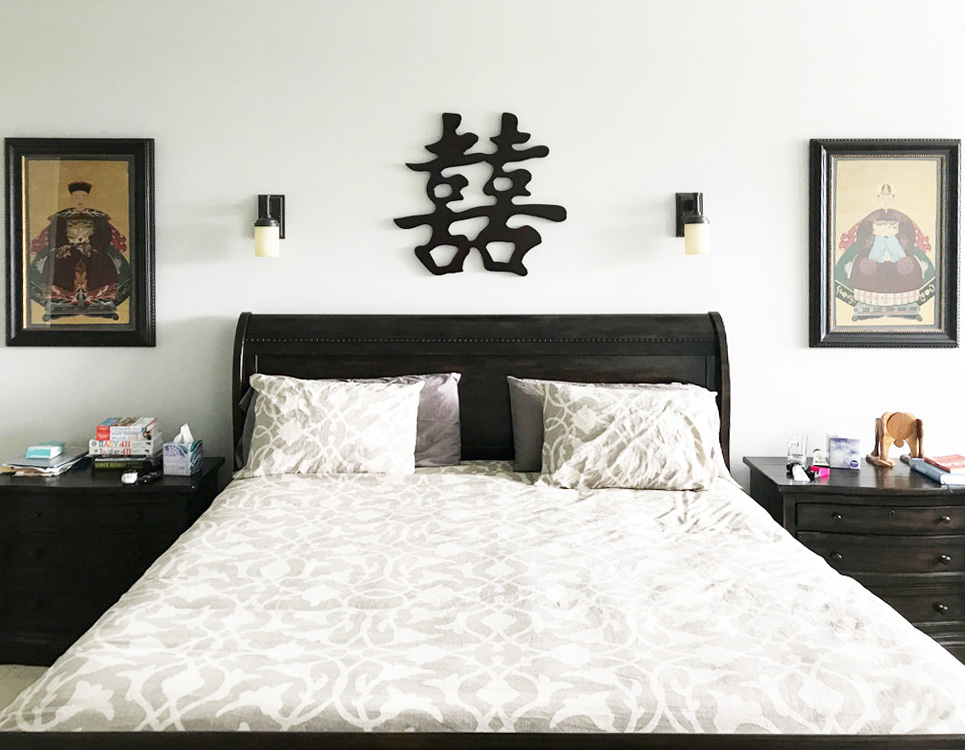
Original Photo Credit Source: Jonathan H., Houston, TX





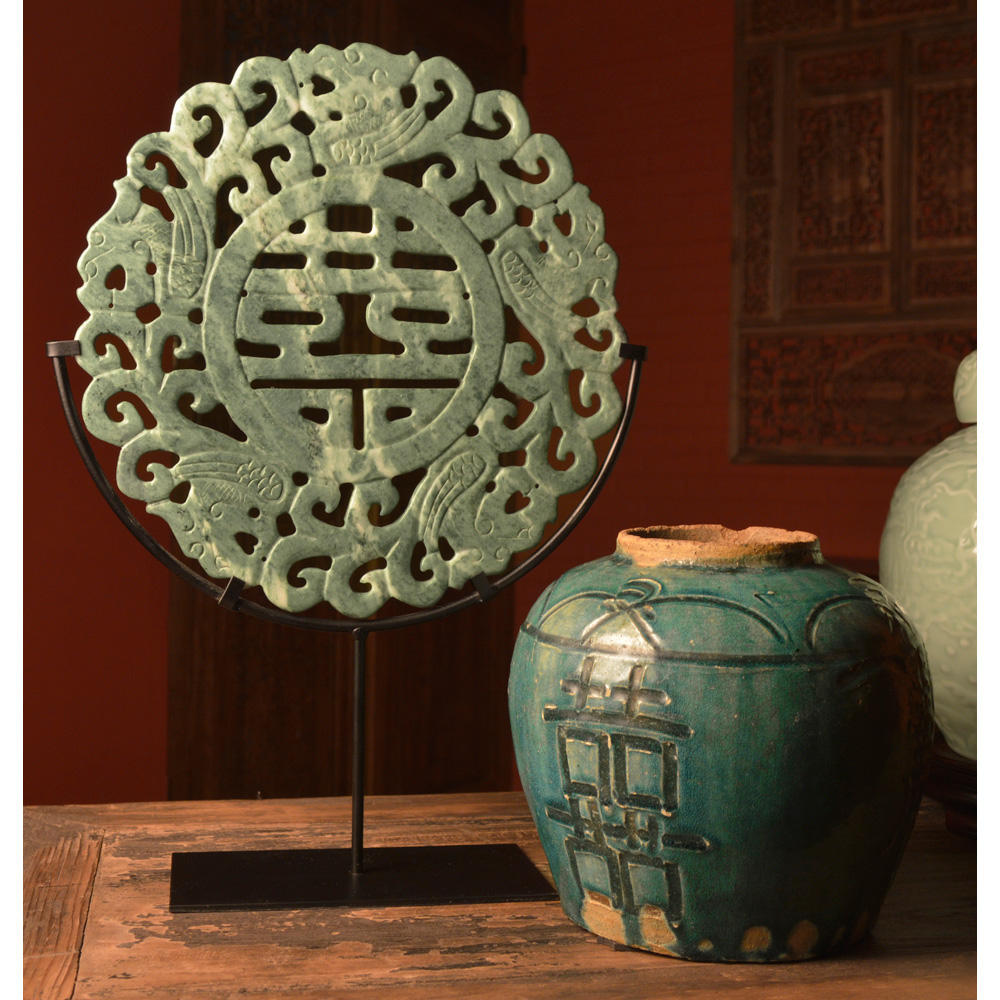
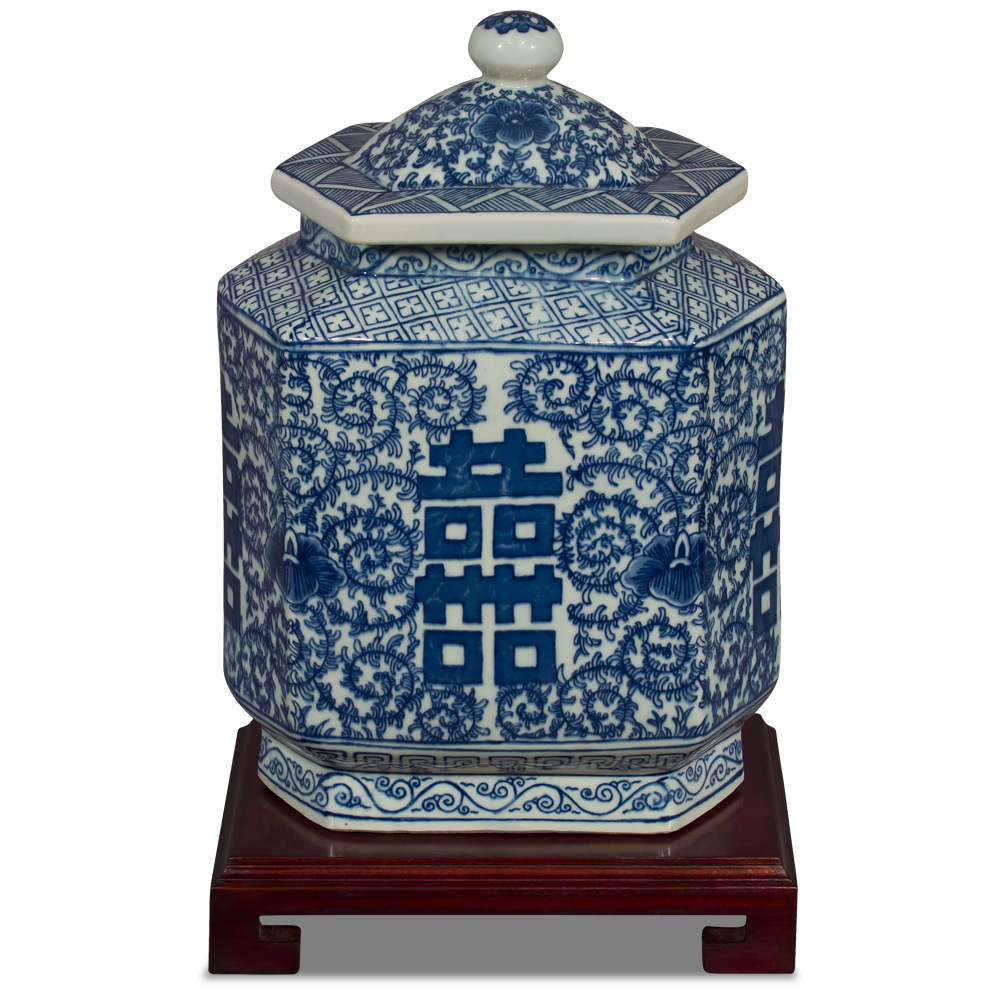
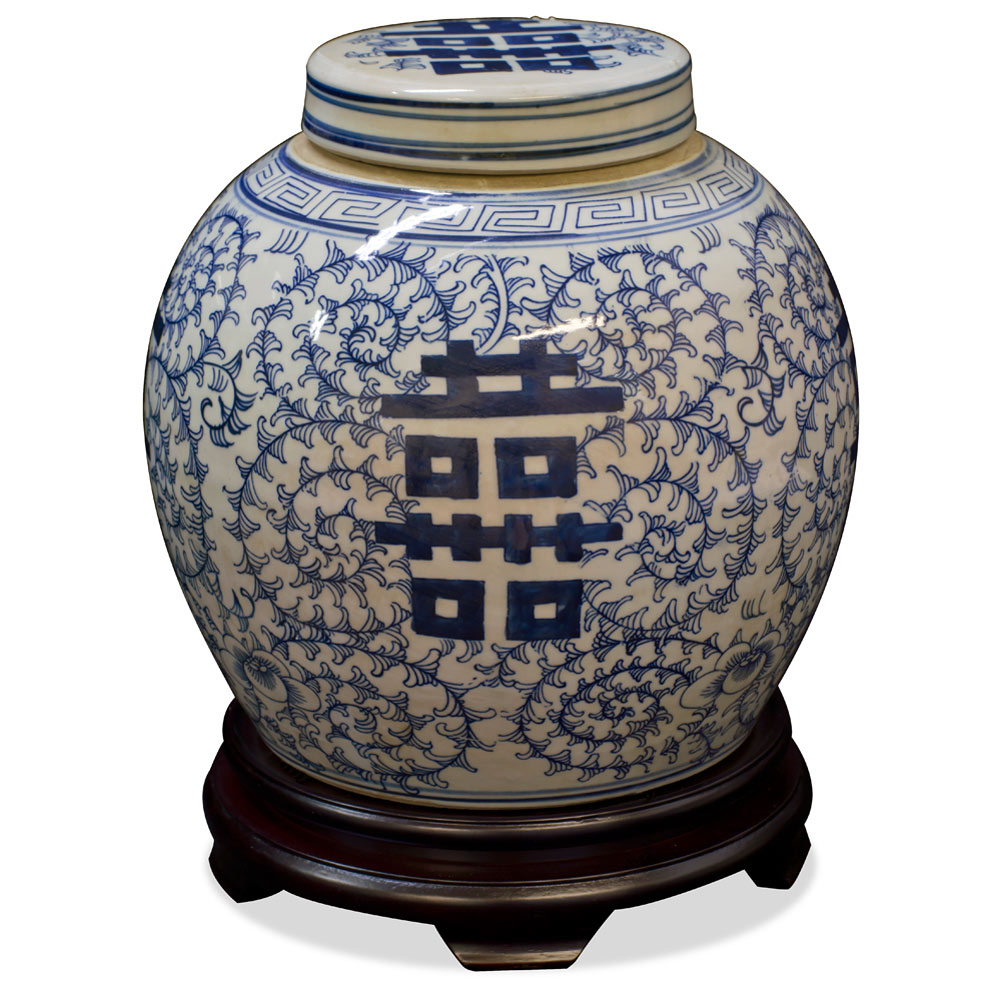

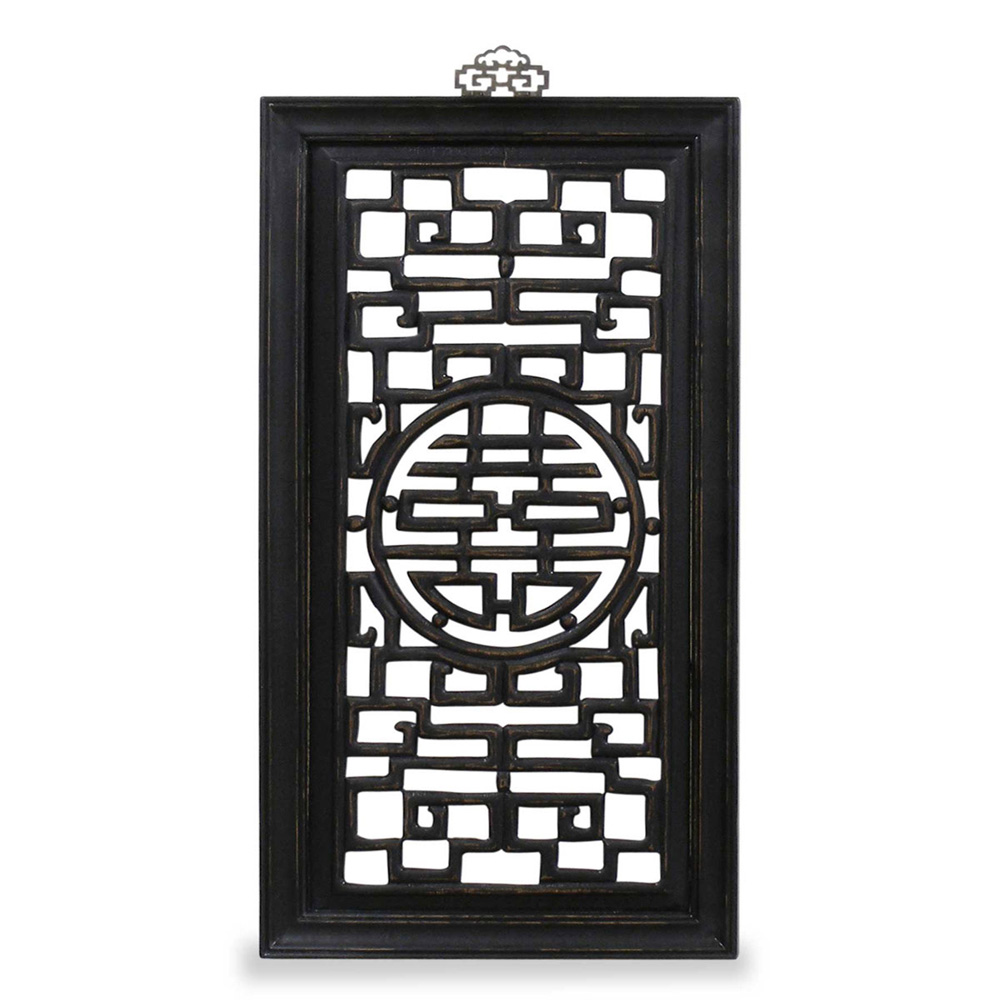
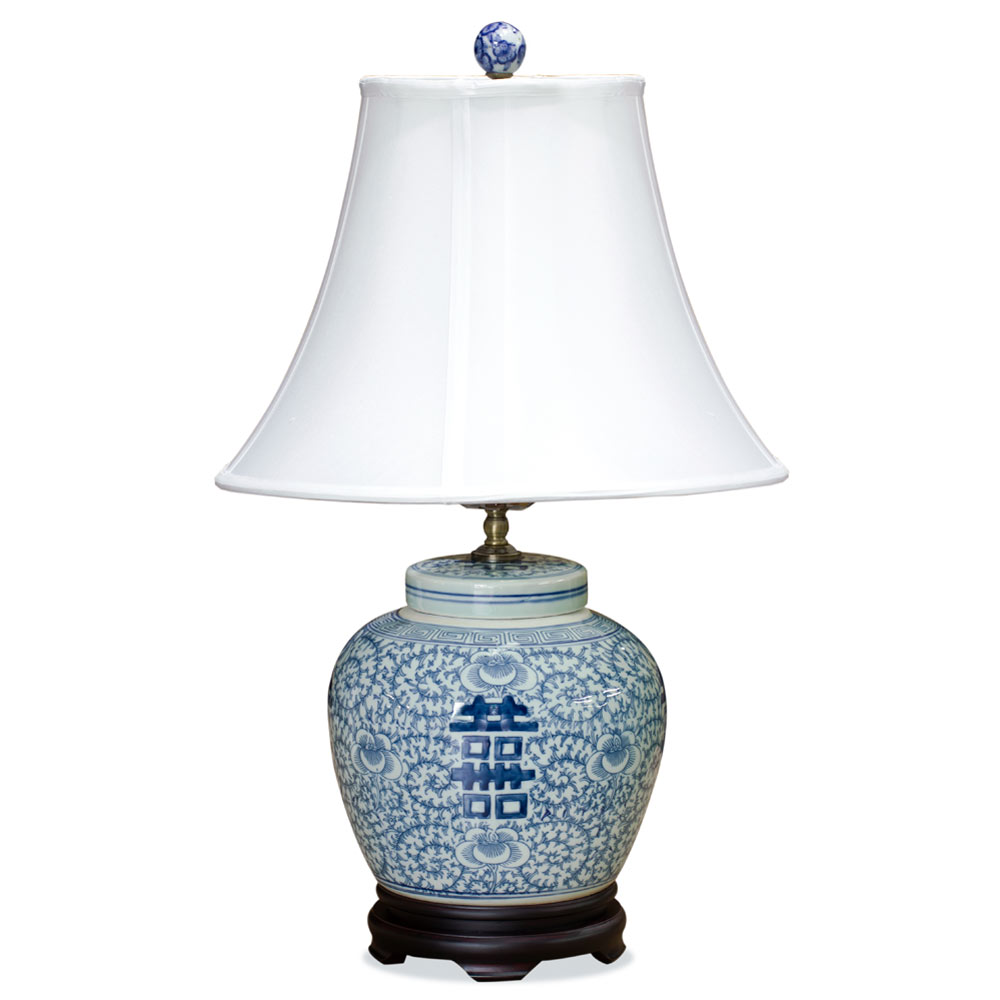
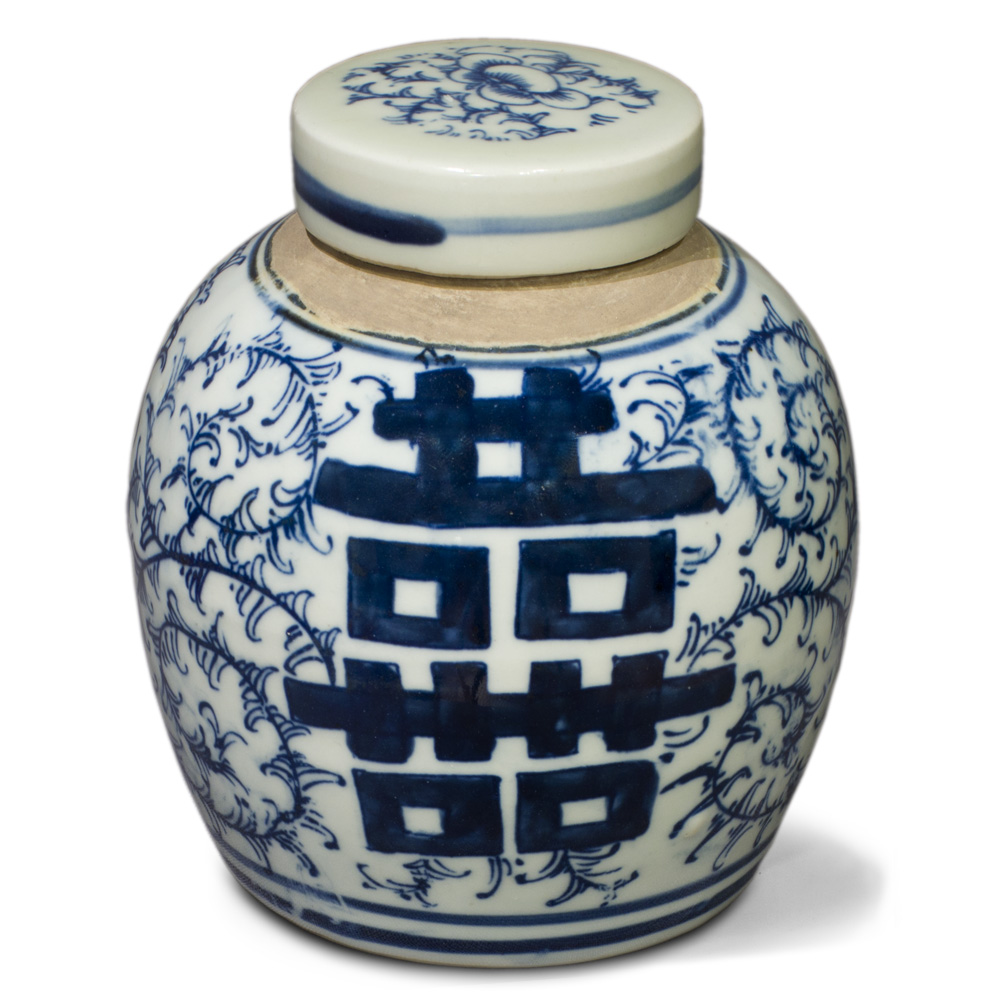
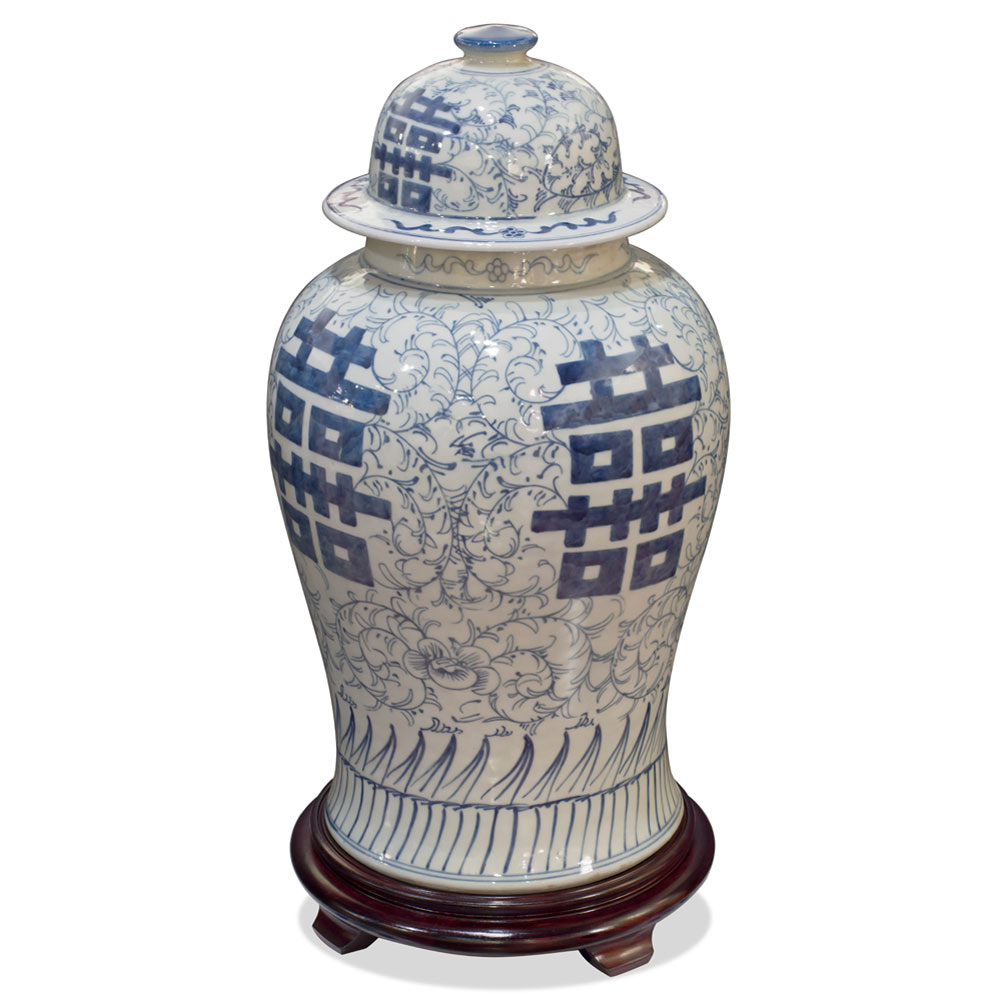
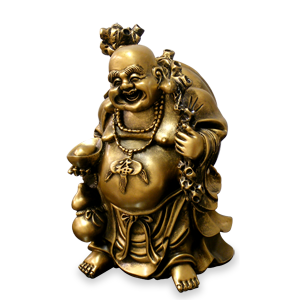
SocialMedia